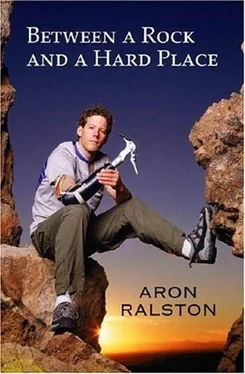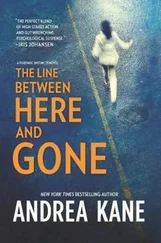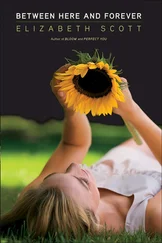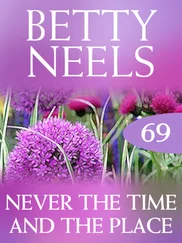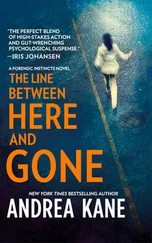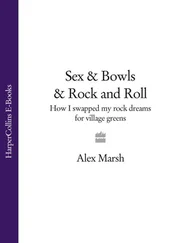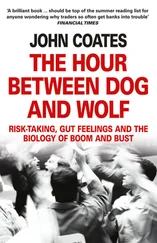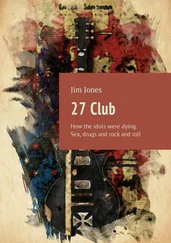A mile past Burr Pass, my torturous ride into the thirty-mile-an-hour headwind finally comes to an end. I dismount and walk my bike over to a juniper tree and fasten a U-lock through the rear tire. I have little worry that anyone will tamper with my ride out here, but as my dad says, “There’s no sense in tempting honest people.” I drop the U-lock’s keys into my left pocket and turn toward the main attraction, Blue John Canyon. I follow a deer path on an overland shortcut, listening to some of my favorite music on my CD player now that the wind isn’t blowing so obnoxiously in my ears. After I’ve hiked through some dunes of pulverized red sandstone, I come to a sandy gully and see that I’ve found my way to the nascent canyon. “Good, I’m on the right route,” I think, and then I notice two people walking out of view thirty yards downcanyon. I leap down the dune into the shallow wash, and once I’m around the dune’s far corner, I spot the hikers, who look from this distance to be two young women.
“What are the odds?” I think, surprised to find anyone else this far out in the desert. Having been inside my head for three hours, and perhaps wanting to shake that feeling of loneliness picked up out on the road, I pause to take off my headphones, then spur myself to catch up. They’re moving almost as quickly as I can manage without jogging, and it takes a minute before I can tell that I’m making any distance on them at all. I’d been fully expecting a solo descent in the Main Fork of Blue John Canyon, but meeting like-minded people in far-flung places is usually a fun addition to the experience for me, especially if they can keep a fast pace. In any case, I can hardly avoid them at this point. At another bend, they look back and see me but don’t wait up. Finally, I catch up with them but can’t really pass them unless they stop, which they don’t.
Realizing that we’re going to be hiking together for a while, I figure I should initiate a conversation. “Howdy,” I begin, “how’s it goin’?” I’m not sure if they’re open to meeting a stranger in the backcountry. They answer with a pair of unadorned hi’s.
Hoping for something a little more engaging, I try again. “I wasn’t expecting to see anyone in the canyon today.”
Even though it is a Saturday, this place is remote, and so obscure I couldn’t even tell it was here from the Robbers Roost dirt access road, despite my map that definitively shows the canyon’s presence.
“Yeah, you surprised us, sneaking up like that,” the brown-haired woman replies, but then she smiles.
“Oh, sorry. I was listening to my headphones, kind of wrapped up in my thoughts,” I explain. Returning the smile, I extend an introduction: “My name’s Aron.”
They relax noticeably and share their names-they are Megan, the brunette who spoke to me and who seems to be the more outgoing one of the pair, and Kristi. Megan’s shoulder-length hair whirls attractively around her hazel eyes and rosy-cheeked face. She’s wearing a blue zip-neck long-sleeved shirt and blue track pants and carries a blue backpack-if I had to guess, I’d say she likes the color blue. Kristi’s blond hair is pulled back in a ponytail that reveals the sunny freckles on her forehead and her deep grayish-blue eyes. Besides her clothes-a plain white short-sleeved T-shirt with blue shorts over black long underwear-I notice that Kristi has accessorized for the day, wearing small silver hoop earrings and dark sunglasses with faux tortoiseshell frames and a snakeskin-pattern retaining strap. Unusual to have earrings on in a canyon, but I’m hardly dressed to kill, so I skip issuing a fashion citation. Both women are in their mid-twenties, and I learn in response to my first question that they both hail from Moab. I briefly work on memorizing their names, and which one is which, so I don’t goof it up later.
Megan doesn’t seem to mind joining me in conversation. She fires off a story about how she and Kristi overshot the Granary Spring Trailhead and got lost in the desert for an hour before they found the start of the canyon. I say I think it is easier to navigate on a bike than in a vehicle because the landscape passes more slowly.
“Oh my God, if we’d been on bikes, we’d have dried up in the wind before we got here,” Megan cracks, and it serves to break the ice.
The canyon is still just a shallow arroyo-a dry sandy gulch-nestled between two sets of thirty-foot-tall sand dunes. Before the terrain becomes more technical, we ease into a friendly exchange, chatting about our lives in the polarized resort communities of Moab and Aspen. I learn that they, like me, work in the outdoor recreation industry. As logistics managers for Outward Bound, they outfit expeditions from the company’s supply warehouse in Moab. I tell them I’m a sales and shop worker at the Ute Mountaineer, an outdoor gear store in Aspen.
There’s a mostly unspoken acknowledgment among the voluntarily impoverished dues-payers of our towns that it’s better to be fiscally poor yet rich in experience-living the dream-than to be traditionally wealthy but live separate from one’s passions. There is an undercurrent of attitude among the high-country proletariat that to buy one’s way back into the experience of resort life is a shameful scarlet letter. Better to be the penniless local than the affluent visitor. (But the locals depend on the visitors to survive, so the implied elitism is less than fair.) We understand our mutual membership on the same side of the equation.
The same is true of our environmental sensibilities. We each hold Edward Abbey-combative conservationist; anti-development, anti-tourism, and anti-mining essayist; beer swiller; militant ecoterrorist; lover of the wilderness and women (preferably wilderness women, though those are unfortunately rare)-as a sage of environmentalism. Remembering an oddball quote of his, I say how he delighted in taking things to the extreme. “I think there was an essay where he wrote, ‘Of course, we’re all hypocrites. The only true act of an environmentalist would be to shoot himself in the head. Otherwise he’s still contaminating the place by his mere presence.’ That’s a paraphrase, but it’s effectively what he said.”
“That’s kind of morbid,” Megan replies, putting on a face of sham guilt for not shooting herself.
Moving on from Ed Abbey, we discover that we’re each experienced in slot canyoneering. Kristi asks me what my favorite slot canyon is, and without hesitation, I recount my experience in Neon Canyon, an unofficially named branch of the Escalante River system in south-central Utah. I wax poetic about its five rappels, the keeper pothole (a deep, steep, and smooth-walled hole in the canyon floor that will “keep” you there if you don’t have a partner to boost out first), and the Golden Cathedral: a bizarre rappel through a sandstone tunnel in the roof of an alcove the size of Saint Peter’s that leaves you hanging free from the walls for almost sixty feet until you land in a large pool of water and then swim to the shore.
“It’s phenomenal, you have to go,” I conclude.
Kristi tells me about her favorite slot, which is just across the dirt road from the Granary Spring Trailhead. It’s one of the upper forks of the Robbers Roost drainage, nicknamed “Mindbender” by her Outward Bound friends. She describes a passage in that slot where you traverse the canyon wedged between the walls some fifteen feet off the ground, the V-shaped slot tapering to a few inches wide at your feet, and even narrower below that.
I mentally add that one to my to-do list.
A few minutes later, just before noon, we arrive at a steep, smooth slide down a rock face, which heralds the first slot and the deeper, narrower sections that have drawn us to Blue John Canyon. I slide fifteen feet down the rock embankment, skidding on the soles of my sneakers, leaving a pair of black streaks on the pink sandstone and spilling forward into the sand at the bottom of the wall. Hearing the noise as she comes around the corner, Kristi sees me squatting in the dirt and assumes I have fallen. “Oh my gosh, are you OK?” she asks.
Читать дальше
